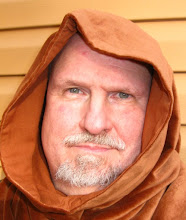Why the Japanese turned to Western food.
IN New York or Los Angeles, fans of Japanese cuisine can rattle off orders for uni and o-toro, or urbanely express a preference for soba over udon. But what about “Napolitan,” cooked spaghetti that is rinsed in cold water, then stir-fried with vegetables in ketchup? Or “menchi katsu,” hamburger covered in bread crumbs and deep-fried? Or “omu rice,” an omelet lying over a mound of ketchup-flavored rice?
At once familiar and alien, these dishes may make Americans feel, with some justification, that they have wandered into a parallel culinary universe. All are standards of a style of Japanese cuisine known as yoshoku, or “Western food,” in which European or American dishes were imported and, in true Japanese fashion, shaped and reshaped to fit local tastes.
Yoshoku was born during Japan’s Meiji Restoration, the period that followed this isolationist country’s forced opening by America’s so-called Black Ships in 1854. Japanese were dispatched to Europe and America to learn about Western laws, weapons and industry. They also brought back the cuisine. Shocked to discover how much shorter they were than Westerners, Japanese determined that they would catch up not only economically and militarily but also physically, by eating their food.
That desire survived at least until the 1970’s, when a businessman named Den Fujita established McDonald’s in Japan and claimed that its menu would make Japanese as tall and attractive as Americans.
“Japanese are poorly built because they eat rice,” he said at the time. “We’ll change that with hamburgers. After eating hamburgers for a thousand years, Japanese will even have blond hair.”
Crever people!
Subscribe to:
Post Comments (Atom)







4 comments:
Crever people! ?
I came across this term in an old novel tonight and from context it seems to be some kind of sex doll. A quick google-search led me to you and not much else. What (if anything) can you add?
It's an example of stereotype Japanese-pronunciation English. Japanese typically pronounce English "L's" as "R." Another famous example is Japanese camera go crick crick!
Crever people! is indeed in reference to a sex doll, travel writer Paul Theroux mentioned their use by Japanese merchant sailors on long voyages, the dolls apparently having voice circuitry and other deluxe features. Can't remember the title of that particular book, though.
Thanks for the info - the book was John D McDonald's final Travis McGee novel "The Lonely Silver Rain" - excellent book but definitely not the first of the series to read. I'll be back to delve deeper into your blog over the weekend.
Thank Again
Robert
You're exactly right, it was MacDonald. I have the book on my shelf right now, should have remembered that.
If you're coming to the McGee series as a new fan, you certainly started at the wrong end of the series. :) Most of the earlier books are stand-alone and don't require knowledge of the series, but the later books abandoned this trait.
You can read most of the early ones out of sequence. The better ones are The Deep Blue Good-Bye, (McGee's first appearance), Bright Orange For the Shroud, A Deadly Shade of Gold, Darker Than Amber, and Pale Grey For Guilt. They are a bit dated in dialog, but are still good reads.
Post a Comment